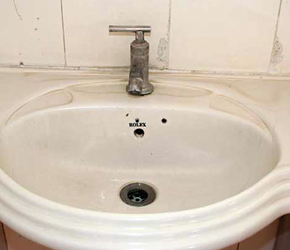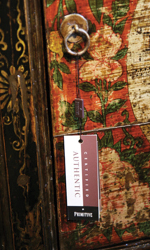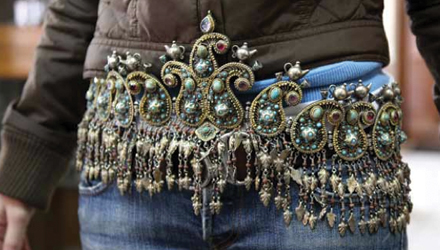For 500 Rupees: What is Authentic? – Glen Joffe Answers... It Matters.
PRIMITIVE - Sunday, January 04, 2009 |
|
Sitting at a vendor’s in Udaipur, I started my personal collection. Among shelves of knives, I spotted a pair of brass tweezers with a peacock on top. It was used to pull wicks from oil lamps so one could avoid getting their hands dirty. I was led to believe it was a tool used and made for royal ladies. While Joe chatted at length with the owner about Damascus steel, I continued to peruse the shelves. I encountered a lidded spoon that was intended to hold charcoal for eye makeup. The lid had a quarter sized mirror attached to the reverse side. I slid the top open and mimicked the way I thought an Indian queen would apply charcoal to her eyelids. Some objects have a way of making it natural to play pretend with the past. When I was about to purchase my find, I asked the vendor if this particular pair of tweezers was actually used by royalty. He scoffed, “Of course not. This was used by someone else. ” My heart sank. I still bought it, but not with the same enthusiasm with which I had found it. Something, something I still can’t define even after reflection, was lost when he told me that. The beginning of my collection was now marred because this piece was not touched by royal hands and did not reside in a royal household. But did this make it an imposter piece?
 |
|
I see now the purpose of Primitive’s “authentic” tags. If you go to the store, you can’t miss them. They are attached to items that have been certified authentic. They do not ensure the use of something by a particular someone. Instead, they give certainty that the piece was not merely created to be sold.
The tags state that the object was used or created with the intention to be used by the indigenous people. The majority of the tags have been put on by me. When I started doing the inventory, Glen insisted I do this. I couldn’t really understand why, but I did it because Glen’s the boss. What role did use have in determining authenticity? What does something need to lack to be considered fake? What do those words mean anyway?
I don’t intend to answer my questions, but I do know now it does matter. Something changed in me when I discovered my tweezers had not touched an Indian queen’s hand. But was I any worse for the realization? The piece still looked the same. It was still old. It was still created for the same purpose. In fact, the only thing that had changed was my perception of the owner, but owned it still was. Did the fact it had not pulled wicks in a royal household make it any less meaningful to the person who used it, even if she was not a queen? Was it any less beautiful?
There is a quality to the objects at Primitive that speak to this. They do allow someone to play pretend with the past. Their existence documents the passing of time. In handling one, a person touches history. In owning one, a person owns a part of history. Acquiring such an object allows one to associate them self more firmly with that past, and more so, to carry it into the future. Authenticity and ownership are linked; but today I am unsure how to untie the two.
 An authentic belt An authentic belt |
|